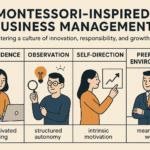
“Strategic Decision Making: Tools and Techniques”
Course Introduction and Overview
Strategic decision making is a critical skill in business, enabling leaders to navigate complex environments and make choices that drive long-term success.
This course, “Strategic Decision Making: Tools and Techniques,” is designed to provide a comprehensive understanding of the strategic decision-making process, equipping students with the knowledge and tools necessary to analyze situations, evaluate alternatives, and implement effective decisions.
Course Introduction:
The course begins with an introduction to the fundamentals of strategic decision making.
It will cover essential concepts, frameworks, and methodologies used in the decision-making process.
Students will learn about different types of strategic decisions, the importance of these decisions in various business contexts, and the impact of strategic decision making on organizational success.
Course Overview:
The course is structured into four main modules:
- Introduction to Strategic Decision Making
- Tools for Strategic Decision Making
- Techniques for Effective Decision Making
- Application and Integration
Each module will dive into specific aspects of strategic decision making, providing both theoretical knowledge and practical applications.
The course will employ a mix of lectures, case studies, group projects, and interactive sessions to ensure a holistic learning experience.
Course Objectives and Expectations
Course Objectives:
The primary objectives of the course are to:
- Understand Strategic Decision Making: Provide a deep understanding of the fundamental principles and concepts of strategic decision making.
- Explore Tools and Techniques: Introduce various tools and techniques used in the decision-making process, including SWOT analysis, PESTEL analysis, Porter’s Five Forces, and more.
- Develop Analytical Skills: Enhance students’ critical thinking and analytical skills to assess complex business situations and make informed decisions.
- Apply Decision-Making Models: Enable students to apply strategic decision-making models and frameworks to real-world business scenarios.
- Improve Leadership and Communication: Foster leadership and communication skills essential for effective decision making and implementation in a business context.
Course Expectations:
Students are expected to:
- Active Participation: Engage actively in all class discussions, group projects, and activities.
- Timely Submissions: Complete and submit all assignments, quizzes, and projects on time.
- Collaboration: Collaborate effectively with peers during group projects and discussions.
- Critical Thinking: Apply critical thinking and analytical skills to evaluate different scenarios and make strategic decisions.
- Continuous Learning: Stay updated with the latest trends and developments in strategic decision making through readings and research.
Importance of Strategic Decision Making in Business
Strategic decision making is crucial for the success and sustainability of any organization.
It involves making choices that have long-term implications and can significantly impact an organization’s direction and performance.
Here are several reasons why strategic decision making is essential in business:
1. Long-Term Success: Strategic decisions shape the future direction of an organization, ensuring long-term growth and sustainability. They help organizations set clear goals, allocate resources efficiently, and navigate uncertainties.
2. Competitive Advantage: Effective strategic decision making enables organizations to gain and maintain a competitive advantage. By analyzing the competitive landscape and making informed choices, businesses can position themselves ahead of their rivals.
3. Resource Optimization: Strategic decisions involve optimal allocation and utilization of resources, ensuring that investments are made in areas that yield the highest returns. This leads to improved efficiency and effectiveness in operations.
4. Risk Management: Through strategic decision making, organizations can identify potential risks and develop strategies to mitigate them. This proactive approach helps in managing uncertainties and minimizing negative impacts on the business.
5. Adaptability and Resilience: In a dynamic business environment, strategic decision making equips organizations with the ability to adapt to changes and respond to new opportunities and threats. It fosters resilience and agility, enabling businesses to thrive in changing conditions.
6. Stakeholder Alignment: Strategic decision making ensures that the interests and expectations of various stakeholders, including employees, customers, investors, and partners, are considered and aligned. This leads to improved stakeholder relationships and organizational harmony.
Key Concepts and Terminology
To fully grasp strategic decision making, it is important to understand the key concepts and terminology associated with it.
Here are some fundamental terms and concepts:
1. Strategic Decision: A decision that has significant long-term implications for an organization and is typically made by top management. These decisions are often complex, involving multiple variables and uncertainties.
2. Strategic Management: The process of formulating, implementing, and evaluating strategies to achieve organizational goals. It involves a continuous cycle of strategic analysis, strategy formulation, strategy implementation, and strategy evaluation.
3. SWOT Analysis: A tool used to identify and analyze the internal Strengths and Weaknesses of an organization, as well as the external Opportunities and Threats. It helps in developing strategies that leverage strengths and opportunities while mitigating weaknesses and threats.
4. PESTEL Analysis: A framework used to analyze the macro-environmental factors affecting an organization, including Political, Economic, Social, Technological, Environmental, and Legal factors. It provides insights into external influences that can impact strategic decisions.
5. Porter’s Five Forces: A model developed by Michael Porter to analyze the competitive forces within an industry. The five forces include the threat of new entrants, the bargaining power of suppliers, the bargaining power of buyers, the threat of substitute products or services, and the intensity of competitive rivalry.
6. Balanced Scorecard: A strategic planning and management system used to align business activities with the organization’s vision and strategy. It measures performance across four perspectives: financial, customer, internal processes, and learning and growth.
7. Decision Tree: A graphical representation of possible solutions to a decision based on different conditions. It helps in evaluating various alternatives and their potential outcomes.
8. Scenario Planning: A technique used to envision and prepare for different future scenarios. It involves creating detailed and plausible views of how the future might unfold and developing strategies to address them.
9. Game Theory: A mathematical framework used to analyze strategic interactions between rational decision-makers. It helps in understanding competitive behaviors and developing strategies accordingly.
10. Behavioral Decision Making: The study of how psychological factors, such as biases and heuristics, influence decision making. It emphasizes the importance of understanding human behavior in the strategic decision-making process.
11. Risk Analysis: The process of identifying, assessing, and prioritizing risks to minimize their impact on the organization. It involves evaluating the likelihood and consequences of different risks and developing strategies to manage them.
12. Ethical Decision Making: The practice of making decisions that are morally and ethically sound. It involves considering the ethical implications of decisions and ensuring they align with the organization’s values and principles.
This course on “Strategic Decision Making: Tools and Techniques” will provide students with a thorough understanding of the strategic decision-making process, the tools and techniques used, and the importance of making informed, ethical, and effective decisions in business.
By the end of the course, students will be equipped with the skills and knowledge necessary to navigate complex business environments and drive organizational success through strategic decision making.
















